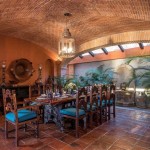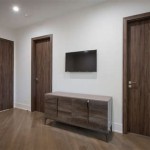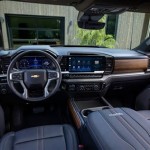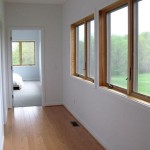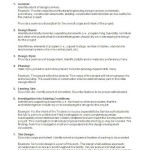RV Interior Paneling: Transforming Your Mobile Home
The interior of your RV is a canvas for your personal style and comfort on the road. RV interior paneling plays a crucial role in defining the aesthetics and functionality of your mobile home. From traditional wood paneling to modern laminates and contemporary finishes, the options for RV interior paneling are diverse and can dramatically transform the ambiance of your living space. Understanding the different types of paneling, their advantages, and installation considerations is key to making the right choice for your RV.
Types of RV Interior Paneling
The world of RV interior paneling offers a wide array of choices to suit various tastes and budgets. Here are some of the most common types:
1. Wood Paneling
Wood paneling remains a popular choice for RV interiors, offering a classic and warm aesthetic. It's available in various wood species, finishes, and styles, including tongue-and-groove, shiplap, and beadboard. Wood paneling is durable, easy to maintain, and can enhance the insulation of your RV. However, it can be susceptible to moisture damage, requiring proper sealing and care.
2. Laminates
Laminate paneling offers a cost-effective alternative to wood, mimicking the look of natural materials with high-pressure laminates. It's available in a vast range of colors, patterns, and textures, making it easy to find a style that matches your preferences. Laminates are resistant to moisture, scratches, and stains, making them ideal for high-traffic areas in your RV.
3. Vinyl
Vinyl paneling is a lightweight and moisture-resistant option that's perfect for RV interiors. It's available in various colors and textures, including wood-look finishes, and can be easily cleaned. Vinyl paneling is also relatively affordable, making it a budget-friendly choice. However, it may not be as durable as other materials and can be susceptible to fading over time.
4. Aluminum
Aluminum paneling is a durable and lightweight option that provides a modern and sleek look. It's often used in RVs for its corrosion resistance and ease of maintenance. Aluminum paneling is typically more expensive than other materials but offers excellent longevity and durability.
Benefits of RV Interior Paneling
Investing in RV interior paneling offers numerous benefits that enhance your living experience on the road:
1. Aesthetics and Personalization
RV interior paneling allows you to personalize your mobile home by adding your own style and flair. Whether you prefer a rustic cabin feel, a contemporary modern vibe, or a classic vintage aesthetic, there's a paneling option to suit your vision. Choosing the right paneling can transform your RV into a space that truly reflects your personality.
2. Enhanced Insulation and Comfort
Many types of RV interior paneling, particularly wood paneling, offer increased insulation for your RV, helping to regulate temperature and improve comfort. This is especially beneficial in extreme weather conditions, keeping your RV warm in the winter and cool in the summer.
3. Moisture Resistance and Durability
RV interior paneling is designed to withstand the challenges of a mobile lifestyle, including humidity, temperature fluctuations, and everyday wear and tear. Choosing moisture-resistant materials like laminates, vinyl, and aluminum ensures that your paneling stays looking good and performs well for years to come.
Considerations for Installing RV Interior Paneling
Before diving into the installation process, consider these crucial factors:
1. Paneling Material
The choice of paneling material depends heavily on your budget, desired aesthetic, and environmental considerations. Consider the pros and cons of each type, including their durability, moisture resistance, ease of maintenance, and compatibility with the existing interior of your RV.
2. Preparation and Tools
Proper preparation is key to a successful installation. This includes cleaning and prepping the existing walls, ensuring they're smooth and free of blemishes. Gather the necessary tools, including a saw, measuring tape, level, and adhesive or fasteners, depending on the chosen paneling material.
3. Installation Process
The installation process varies depending on the chosen paneling type. Some materials require adhesive, while others are secured with fasteners. It's crucial to follow the manufacturer's instructions carefully to ensure a proper and secure installation.

Rv Interior Paneling Repair Tips By Life
The Best Rv Wall Coverings For Every Style And Budget

Rebuild Travel Trailer Rv Interior Remodel Wall Paneling Decor

Lightweight Rustic Wood Rv Walls Wildfire Interiors

Our Promaster Camper Van Conversion Paneling Walls And Ceiling Build A Green Rv

How To Remove Repair Or Replace Rv Interior Walls Rvblogger

Where To Buy Rv Paneling Ceiling Wall Side Panels 2024 Vinyl

How To Insulate Rv Walls With Faux Wood Plank Adhesive Panels

Rv Wall Panels Lining Interior Material For Camper Caravans Röchling Us

Where To Buy Rv Paneling Ceiling Wall Side Panels 2024



